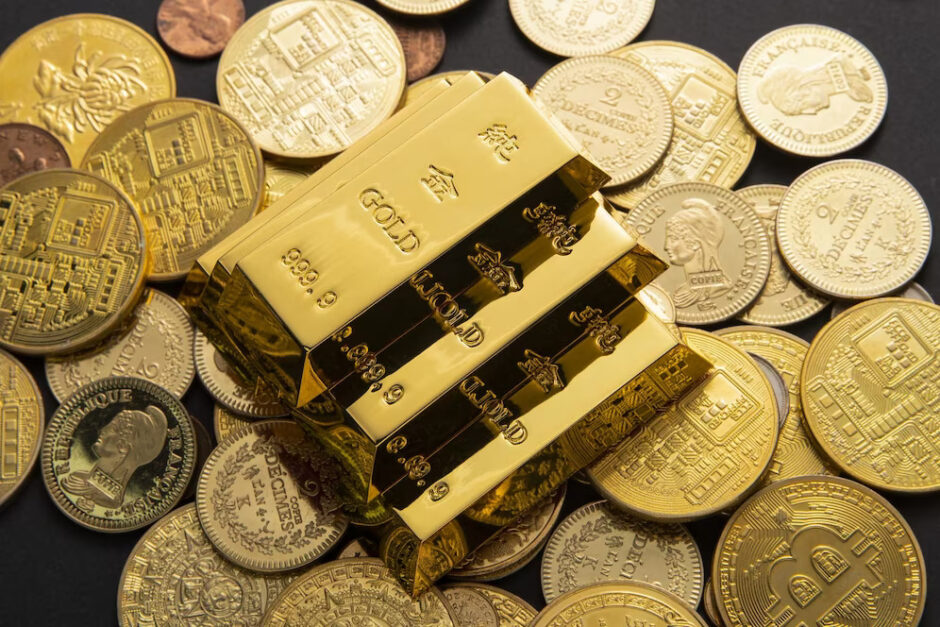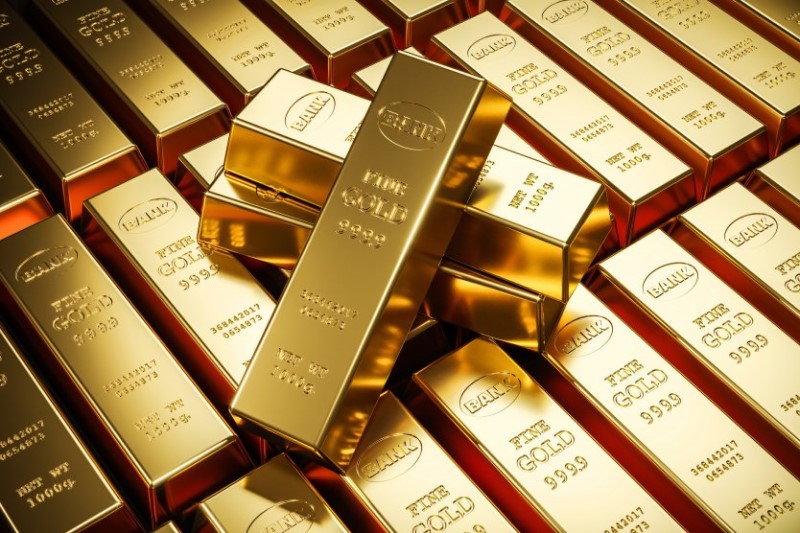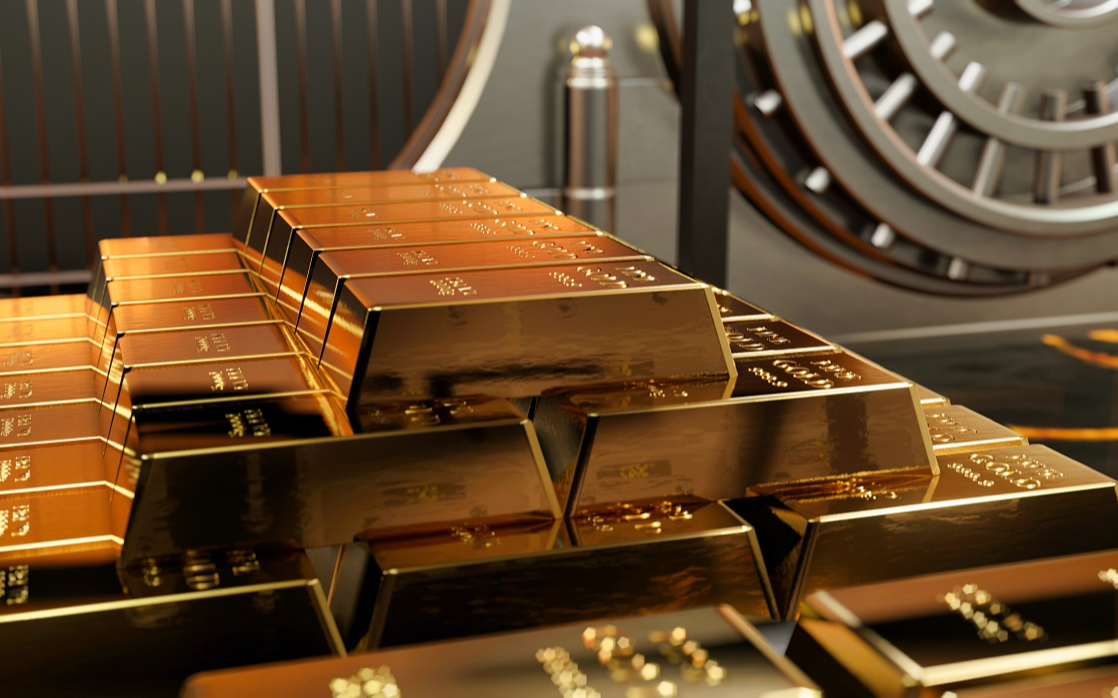Why central banks around the world are buying gold and how do the funds react
In 2022 we have observed a sharp increase in the demand for gold to fill the gold reserves of the world’s central banks. This is perfectly clear from the published review of the World Gold Council (WGC), about the world’s storage of gold over the past year, included in an analysis of the financial portal Investing.com.
World gold production in 2022 increased 2.5 times to a total of 1,135.7 tons of gold, from 450.1 tons in 2021. This is the first time that we have observed a significant increase in the number of transactions during the second half of the year. Finally, in the first quarter of 2022, the central banks of the world collected 88.5 tons of gold, in the second quarter – 185 tons, in the third quarter – 445.1 tons, and in the fourth quarter – 417.1 tons of gold.
Over the past year, central banks’ gold withdrawals were the highest since 1967. Among the main reasons for this, WGC points out the geopolitical instability and the higher inflation. In addition, large requests were made mainly by banks in developing countries, including Turkey and China.
The People’s Bank of China resumed gold mining in its reserves in 2022 for the first time since September 2019. In November and July last year, 62 tonnes of the precious metal were added to the reserves, and the amount of gold in the reserves exceeded 2,000 tonnes. The Central Bank of Turkey announced the largest increase in 2022 – the amount of gold in its reserves to increase from 148 tons to 542 tons, just for the year. Middle Eastern banks were generally active gold buyers last year, with Bank of Egypt buying 47 tons, Bаnk оf Qаtаr – 35 tons, Bаnk оf Iraq – 34 tons, Bаnk оf thе Unіtеd Agаb Emіrаtеѕ – 25 tons and Bаnk оf Omаn – 2 tons. Central Asia is also an active gold buyer. The Bank of Uzbekistan increased its reserves by 34 tons, the Bank of Kyrgyzstan – by 6 tons, the Bank of Tajikistan – by 4 tons.
The Reserve Bank (Central Bank) of India bought 33 tons of the metal, which is less than in 2021 and may be due to active monetary interventions on behalf of the rupee. Gold was also added to the central banks of Ecuador (3 tons), Czech Republic (1 ton), Serbia (1 ton), and Iceland (1 ton).
The National Bank of Kazakhstan became the largest supplier of gold in 2022, reducing gold by 51 tons of the metal, to 352 tons of the total (58% of the total reserves of the country). The Bank of Kazakhstan also announced that it intends to increase gold supplies through 2023, which may be in response to increased gold production in the country.
The Bundesbank (the central bank of Germany) has supplied 4 tons of gold in 2022 as part of its coinage program. Also, small amounts of gold were delivered to the central banks of: Sri Lanka, Poland, the Philippines, Mongolia, Bosnia and Herzegovina, Cambodia and Vietnam.
The world gold council, however, notes that there are a large number of financial operations of central banks, which have not yet been officially recorded, as far as the data is possible.
The active filling of the gold reserves of the central banks causes the depth of the current global crisis. The stability of gold prices through 2022 has once again confirmed the stability of this asset, its inherent resilience in turbulent times and its important role as a long-term asset.
The WGC sees no good reason for the world’s central banks to change (much) their attitude towards gold in 2023. They will maintain a positive net ratio of the precious metal in their reserves and remain net buyers anyway.
Why are the big central banks of the world preparing to use the gold – to form a bailout in the event of the introduction of the gold standard or a protective “cushion” for survival in the future? And maybe the auspicious metal will suddenly take off? These comments and responses are contained in an analysis of the results of experimental opinions published by Prime.
The past year 2022 was the thirteenth year of net gold purchases by central banks around the world. Moreover, these financial operations reached a 55-year peak. Although to the gains of the financial regulators we add stable “retail” investments, the global crush of gold last year was the biggest of the decade.
75% of this crowding is due to the developing countries, in which reserves the part of foreign currencies is traditionally large. The usual suspects we talk about are Turkey, China, India, Egypt, Qatar, Iraq, the United Arab Emirates (UAE) and Oman. Does this mean that they are preparing for the price of the precious metal to rise or even for a return to the “gold” standard?
The experts remind that the changes in the policy of the central banks did not start last year, but after the 2008 financial and economic crisis. It became clear to the international financial specialists even then that the world monetary system was entering a phase of collapse because it would not be able to ensure the right functioning of the existing model of the global economy”, announced a college of renowned economic professors from East and Central Europe.
According to them, this is the main reason for the financial changes, which appeared later, and not the pandemic of coronavirus and not the military operation of Russia in Ukraine.
“Since 2008, none of the world’s developed countries has sold any gold from its reserves, except Germany, which sold a minimum of 45.8 kilograms – which against its reserves of over 3,500 tons is in the range of a tithe”, signed the expert Wladimir Grygoriev. The other countries completely changed their tactics. At the beginning of the 2000s, Switzerland supplied half of the gold reserves (about 1,000 tons), and after 2008 not even a gram.
Currently, the top ten countries with the largest gold reserves are: the USA, Germany, Italy, France, Russia, China, Switzerland, Japan, India, the Netherlands. Together they hold about 70% of the world’s gold reserves. And then the developed countries ceased to sell all their gold compared to Russia, India and China which began to actively purchase.
As for Russia, “it increased its gold reserves almost 4 times to around 2,300 tons, coming very close to the Soviet Union’s time of 2,500 tons,” says Grygoriev.
The experts doubt that the countries who glorify the part of gold in their national reserves, pray for the return of the “golden” standard. As we know, the standard has not only “pluses”, but also “minuses”. The latter include limiting the flexibility of central banks in the formation of domestic policy. This is not exactly what the financial regulators are willing to do – they want to have their “hands untied” in solving the current economic and financial problems.
Namely, inflation is the most important reason that stimulates the price of gold, against the slowdown of the world economy. The situation will not change this year either – because counting only on the leading global currencies, which already showed their vulnerability and unreliability at certain moment, would be unreasonable. And the world leaders do very well understand this, according to Grygoriev.
In a very important extend in the current economic reality, most major countries and central banks do not have much confidence in the financial instruments created by the modern economy. The world’s central banks expect changes amid which gold will remain the most liquid asset, according to financial experts of Reuters.
And how do the funds investing in gold react?
Some of the best funds open to individuals offering a simplified and transparent access to gold and precious metals were created in 2012 already, without naming specific managers and promoting agencies. They are managed by dedicated and recognized management teams, benefiting from in-depth knowledge of the precious metal market, and the main factors that influence it (regulation, macroeconomic, financial and geopolitical developments, production, storage…). Some of the main actors in the banking and wealth management sectors have their ETFs offered to their clientele.
But what exactly precious metals are we talking about?
Some of them are overexposed to gold by 30-35%, but also to silver, platinum and palladium by 20-30% each. This basket shows historically highly correlated performances with those of gold, while ensuring diversification on other precious metals. Furthermore, the funds usually are not exposed to the equity risks of gold mining companies, but only replicates the performance of metals.
Isn’t gold a bad investment for the environment?
A certain portion of the said funds have their assets invested in precious metals necessary for the energy and climate transition. Nowadays it is no longer a trend, but a necessity. Silver, for example, is essential for the manufacture of solar panels. The solar industry, almost insignificant in the demand for silver 10 years ago, today represents nearly 12% of the world demand for this metal.
As for platinum and palladium, these precious metals are essential for “clean mobility”, i.e. electric mobility, another sector of the energy transition. This transition imposes in particular, at the level of transport, increasingly complex environmental standards. Thanks to their catalytic power, platinum and palladium make it possible to limit emissions from gasoline vehicles.











